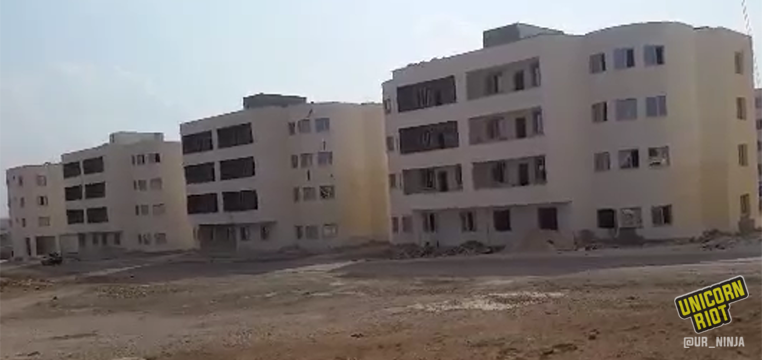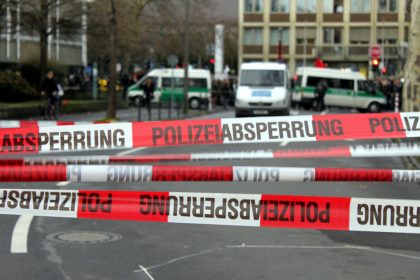Kobane Rebuilds as ISIL Control Diminishes in Syria
Democratic Federation of Northern Syria – Communities across northern Syria have begun to rebuild following the cessation of six years’ worth of conflict that transformed once-thriving areas into bombed-out ghost cities.
Battles between hardened fighters from the Islamic State of the Levant (ISIL) continue around Deir-ez-Zor as units of the Syrian Democratic Forces (SDF) watch over ISIL’s recently-captured former capital city of Raqqa. Meanwhile, residents are taking steps to re-inhabit the Kobane Canton and other areas recently gained from the Islamic State.
Unicorn Riot contributors visited the recovering cities of Kobane and Manbij in northeastern Syria as well as the grim frontline of armed conflict in Deir-ez-Zor, and obtained photographs from Raqqa. The following video presents various elements of life in Syria, such as displaced residents fleeing ISIL control, scoping out an ISIL holdout, clearing a booby-trapped building in Deir-ez-Zor, as well as rebuilding and creating new apartment blocks in Kobane.
With over half of the country’s population displaced during the last few years and a majority of the infrastructure destroyed, estimates place at least a $300 billion price tag on rebuilding Syria. The human death toll in the Syrian conflict in the past six years, as of early November, was estimated at exceeding 340,000.
Since 2012, the Kobane Canton, which borders Turkey in northern Syria, has been one of the de facto autonomous cantons of Rojava, the Democratic Federation of Northern Syria, with military control organized under the YPG (People’s Protection Units, KU: Yekîneyên Parastina Gel, AR: وحدات حماية الشعب), the largest component of the SDF.
Rojava is the Kurdish region of northern Syria that has three “non-contiguous autonomous areas or cantons” established by the Democratic Union Party, whose political ideology is based on jailed Kurdish leader Abdullah Öcalan‘s Democratic Confederalism, which posits that “decision-making processes lie with the communities“.
In late October, we published our first report from the ground in northern Syria, As Course of War Turns, Turkey Challenges Democratic Federation of Northern Syria (Rojava). The in-depth report gave recent historical context with a focus on northern Syria and the factors that gave rise to the modern Turkish-Kurdish side of the Syrian conflict, as well as a wealth of updated maps and a video from the bombed out YPG/YPJ headquarters on Qereçox Mountain.
The Kurdish enclave of Kobane city, as well as the greater Kobane Canton, were besieged by Islamic State fighters in 2014 and for several months, until early 2015, the Islamic State controlled the region.
Many residents of the area fled, seeking protection from the YPG. The residents of Kobane who chose not to flee, suffered through ISIL attacks, kidnappings, and massacres.

The region was freed from ISIL control by a coalition of forces led by the YPG. Much of the city and region has been destroyed by on-the-ground fighting as well as the massive air bombing campaigns by Western forces, formally designated as Combined Joint Task Force-Operation Inherent Resolve (CJTF-OIR), which includes France, the UK, Belgium, Denmark, the Netherlands, Australia, the USA, and Canada. See Airwars.org for detailed data on civilian casualties from airstrikes in Iraq and Syria.
Tens of thousands of residents fled into Turkey and neighboring regions in the last years, as schools, businesses, shops, bridges, sanitation, utilities and other infrastructure were impacted.
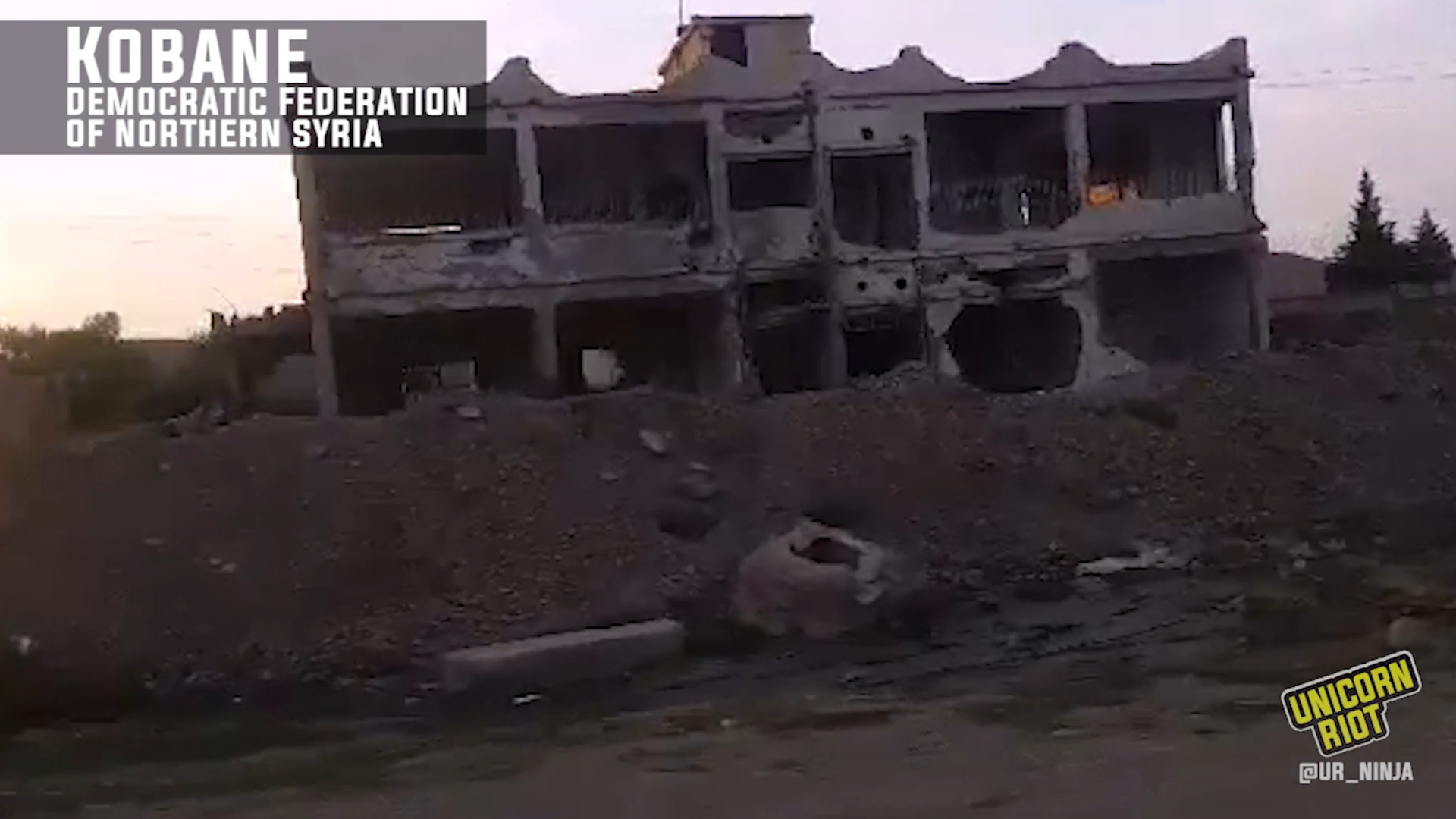
With Kobane surrounded on three sides by the Islamic State, resistance forces of the YPG and YPJ (Women’s Protection Units, KU Yekîneyên Parastina Jin, AR: وحدات حماية المرأة) had to contend with a relentless barrage of light and heavy weapons attacks, improvised artillery, and car bombs.
Locals are adamant that some of the attacks originated from Turkish soil, citing as evidence the northern-most buildings that show a majority of their damage on their northern faces. Locations destroyed by vehicle-borne explosives are located one block from the Turkish border crossing, further indicating collusion by the Turkish regime with the Islamic State in their common battle against the Kurds, who reside in an ethnically diverse region spanning the modern-day borders of Syria, Turkey, Iraq, and Iran.
Linking Kobane to previous decades of armed conflict, Turkey sees the YPG as a terrorist organization threatening its security and as an arm of the Kurdistan Workers Party (PKK, KU: Partiya Karkerên Kurdistanê), who ran an extended insurgent campaign against Turkey during the 1980s and 1990s. Since 1997 the United States has designated the YPG’s ideologically related counterparts across the Turkish border as a Foreign Terrorist Organization. [See our previous story for further background.]
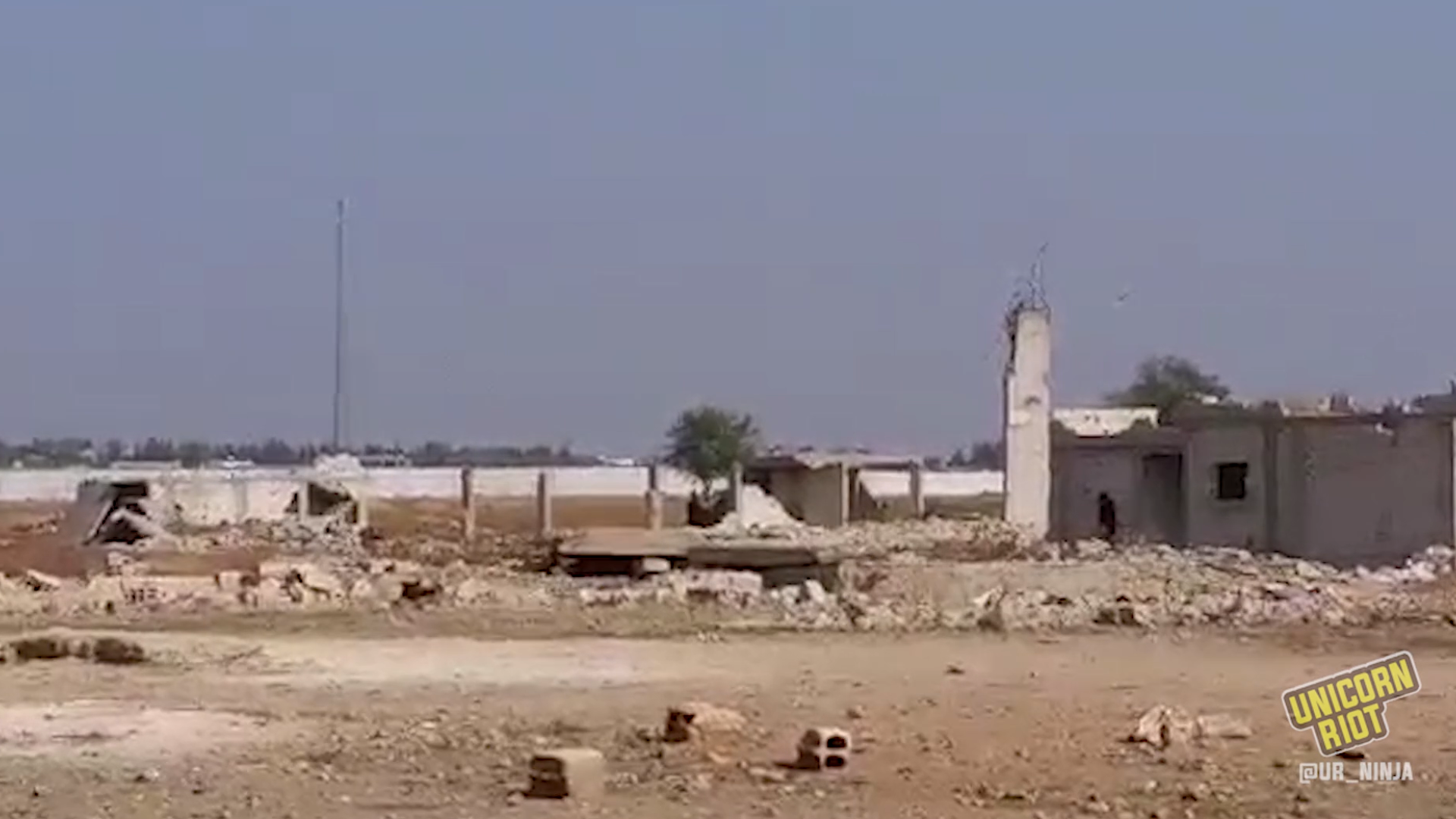
Memorials for fallen resistance fighters line the streets of Kobane. From small placards to large portraits, the fighters’ faces remain in the medians of main streets. The sacrifices of hundreds of Kurds serve as a stark reminder of the importance of the struggle for freedom, a reminder that is imbued throughout the city of Kobane.
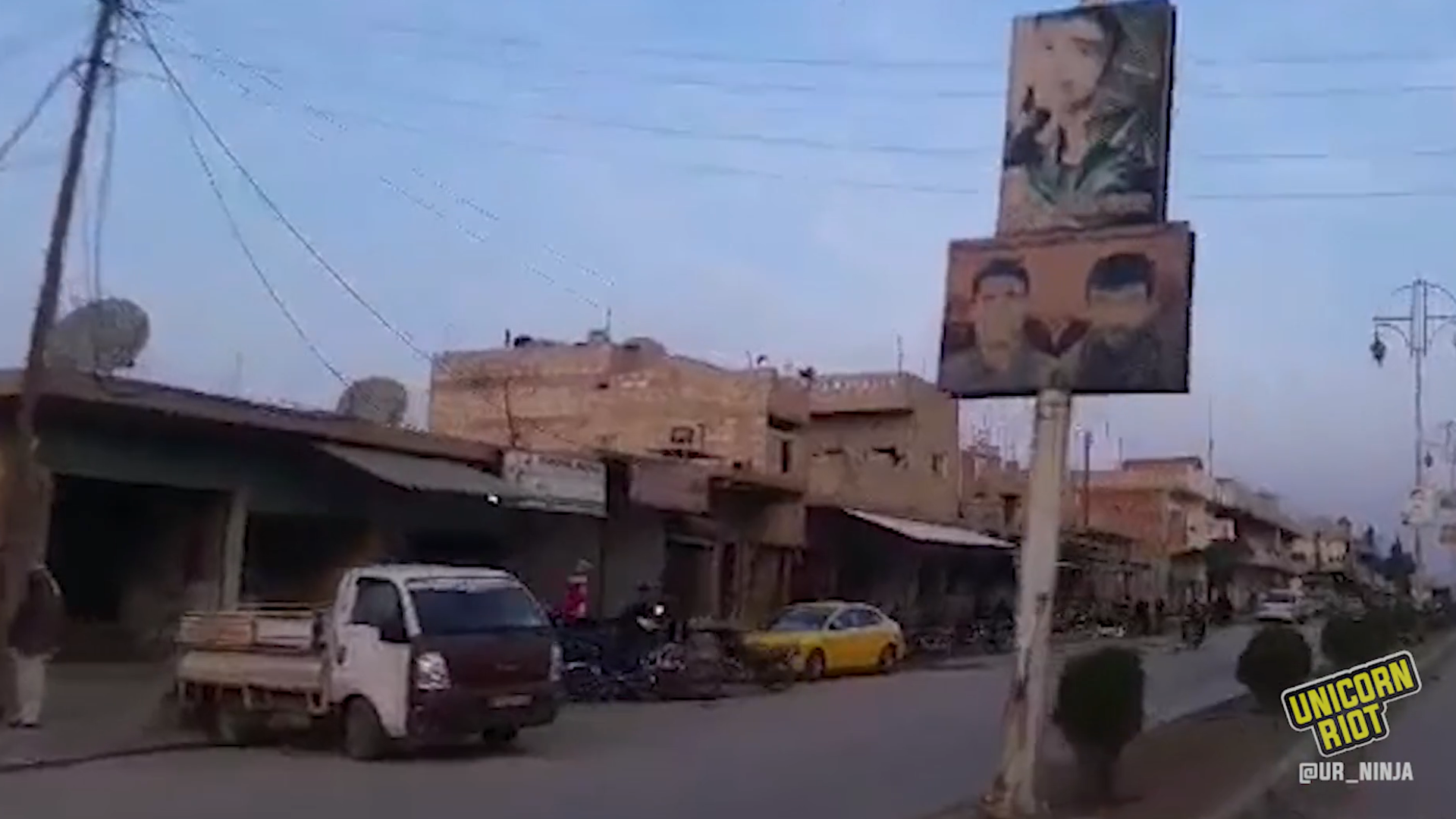
In the last year, widespread rebuilding efforts have taken place to repair collapsed roofs and walls damaged by the fighting. Large residential apartment buildings are being constructed to encourage the repopulation of the once-thriving regional urban center.
Rebuilding in the Kobane region has been a struggle. In November 2015, Idriss Nassan, a spokesman for the local Kurdish government, said that large-scale international aid had been thwarted by politics. Western governments are “reluctant to help for fear of offending Turkey” which objects to the new Kurdish political entity, and permits only limited supplies of humanitarian aid to pass through its mostly-closed border.
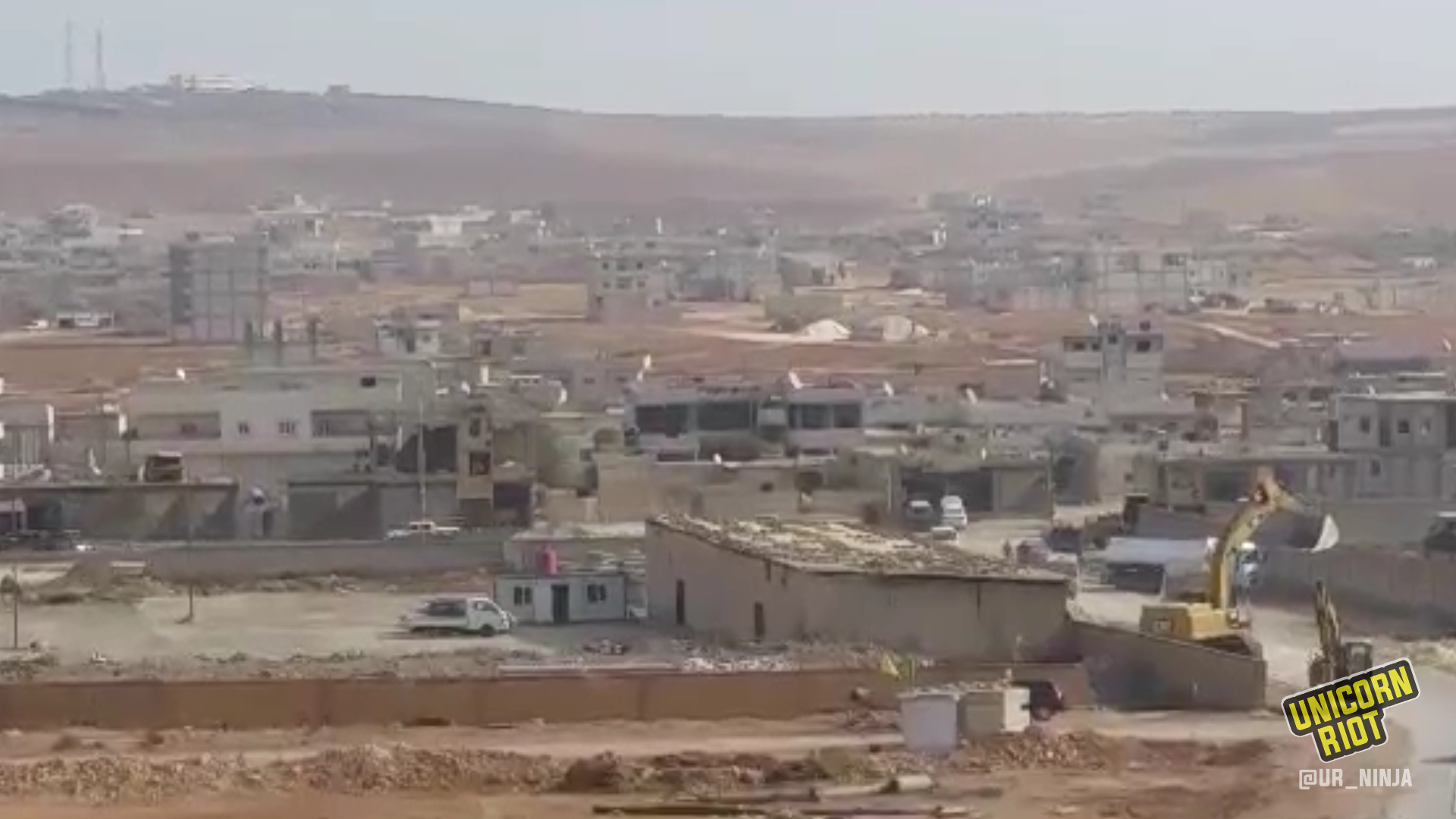
A special portion of the new apartment buildings are being set aside for the families of those who gave their lives to defend the city. Roads are being freshly paved and expanded, the electricity and the sewage systems work, and trash is being collected.
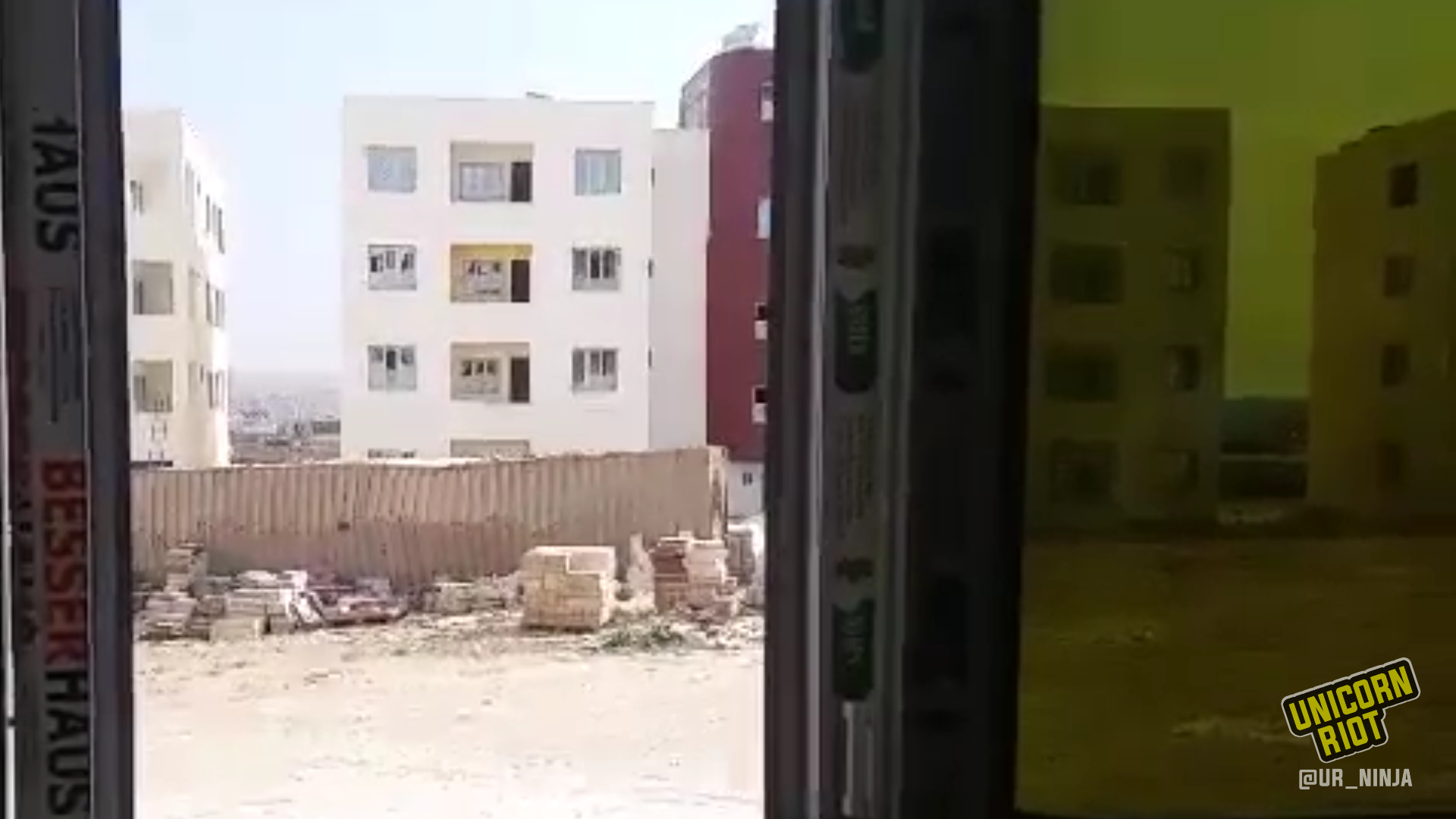
Efforts are being made to preserve the historical antiquities of the region (Islamic State fighters had previously left trails of destruction throughout ancient sites in ISIL-occupied Syria and Iraq); fortunately, the sites around Kobane have remained mostly undamaged. The language of Kurmanji is now being taught alongside Arabic in the same schools recently used for fundamentalist indoctrination during the brief rule of the Islamic State.
With the recent falls of ISIL stronghold cities Mosul, Raqqa, and Deir-ez-Zor, the Islamic State has been reduced to an ideology without a clear territorial base of operations. The pockets they still hold in Deir-ez-Zor province diminish day by day.
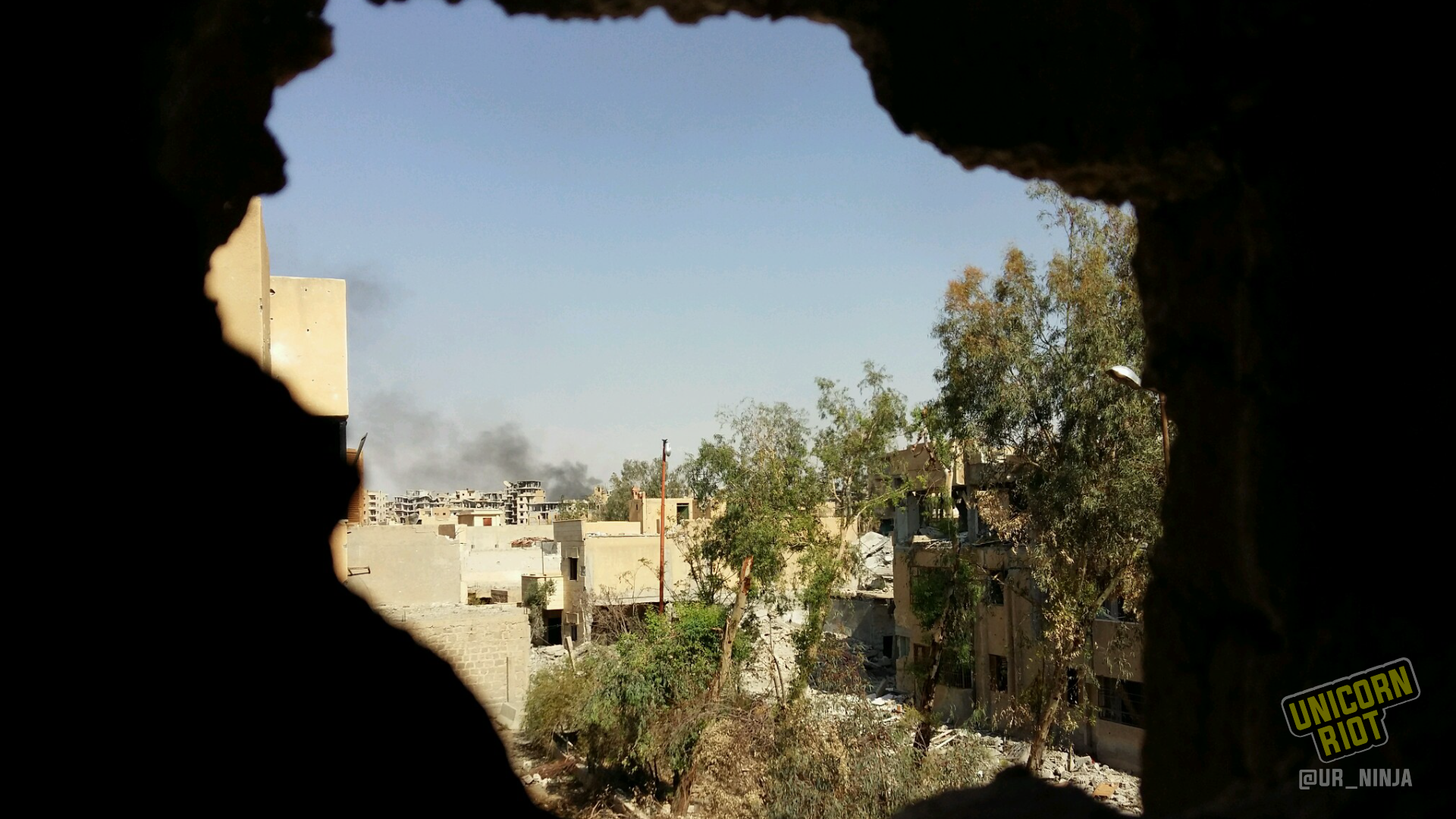
In October of 2017, as coalition forces surrounded Raqqa, numbers of Islamic State fighters were holed up in a hospital in Raqqa. The BBC reported that deals were struck to allow ISIL fighters to leave the region.
In an interview, an international YPG volunteer formerly deployed in Raqqa provided further information on the terms of surrender, including details of a situation where Islamic State fighters in the hospital were threatening to kill their civilian hostages. He pointed to this as the reason behind why the deal had been made, and said he was speaking out because the media that covered the story “neglected to mention the hostage situation“. Listen to his interview below.
The volunteer stated that they were stationed outside of the hospital in Raqqa and their duty at the time was to make sure that “Daesh [IS] doesn’t escape from this hospital and go somewhere else.” He furthered:
“…they [IS] had many, many civilians with them and they threatened us and the local government that if they weren’t allowed to travel out of the hospital to Deir-ez-Zor to meet up with their comrades to fight, they would kill these hostages in a very bloody spectacle. They had attached suicide vests to them, the whole nine yards.
So, our commanders and the military structure, they did not want this to happen. They did not want senseless civilian deaths on their hands, so they talked with the ISIS fighters within this hospital and they agreed to their terms – if they release these hostages unharmed, then they could be put on a convoy and sent to Deir-ez-Zor.” – International YPG Volunteer
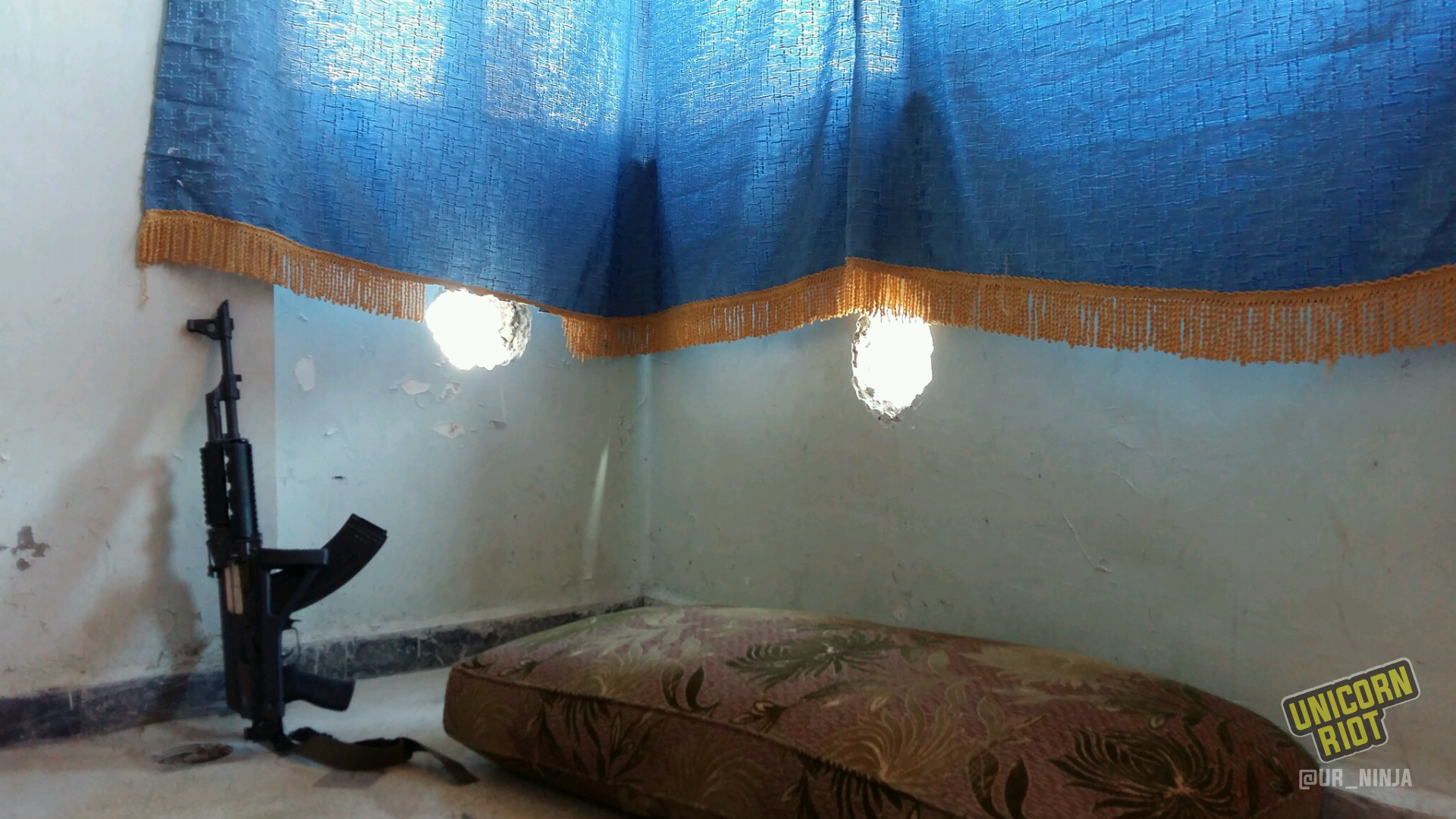
Many of the fighters who had been allowed to leave the hospital in Raqqa are likely now on the frontline continuing to lend their efforts to the struggle. ISIL fighters from Syria, Iraq, and elsewhere, offer tough resistance in the few towns and neighborhoods they still hold, and multiple sources suggest there may be around a thousand fighters. The Russian language, widely used in Central Asian countries, is commonly overheard on ISIL radio frequencies.
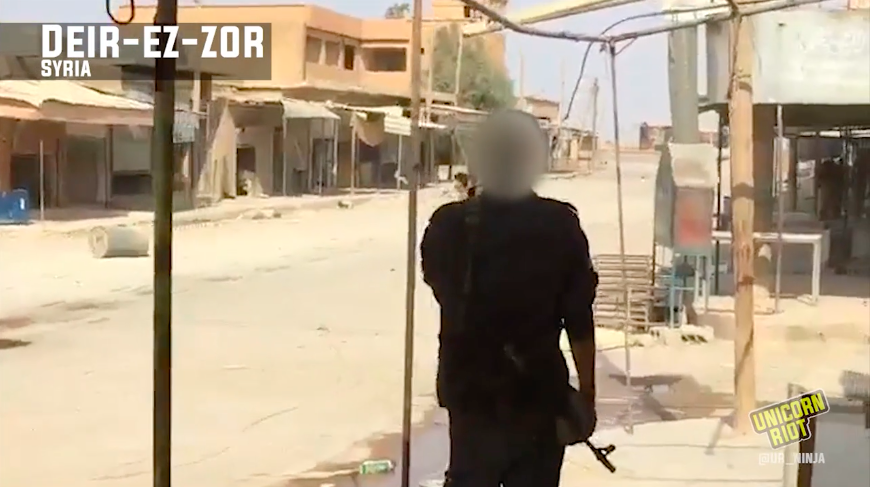
Despite proclamations by outside powers of final victory, the war against Islamic State-aligned forces continues. Professional snipers, heavy weapons, car bombs, and bold counterattacks aim to retain pockets of territory for ISIL. The most hardened are among them, and many show no signs of giving up the fight until the last have been killed or captured.
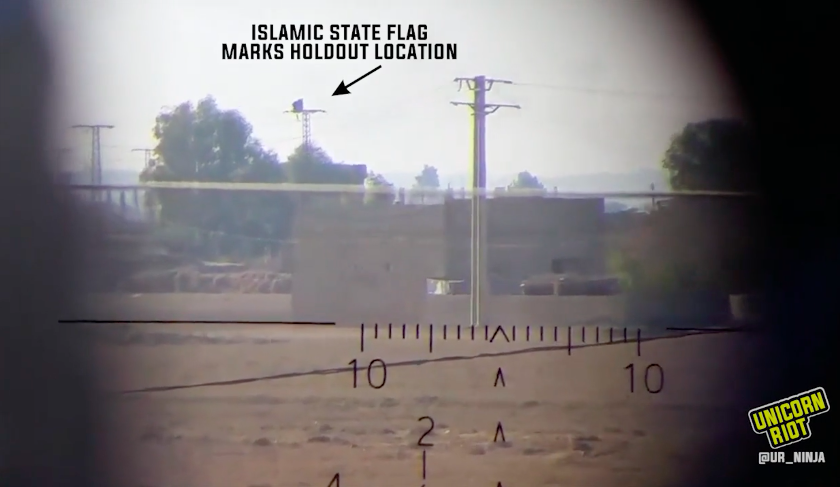
The cities of Raqqa and Tabqa are still being cleared of deadly booby traps and land mines left behind by ISIL.
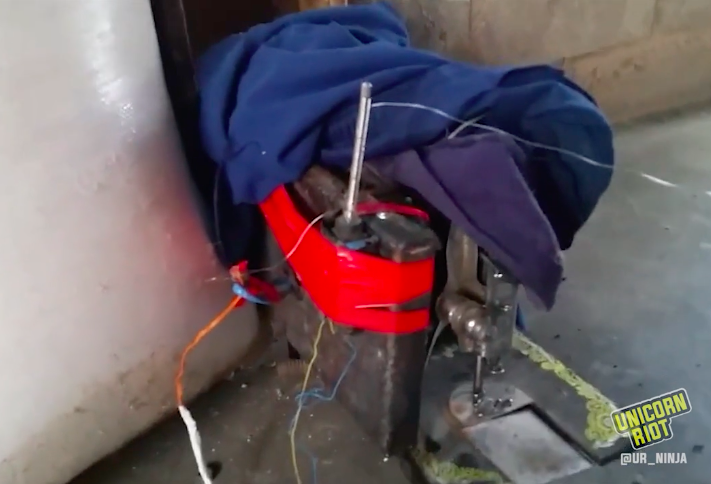
The dangerous, difficult, and painstakingly slow process of going house-to-house in order to discover and dismantle each and every homemade explosive device has led to the recent deaths of British internationalist volunteers Jac Holmes and Oliver Hall, who were helping to clear the improvised explosive devices (IEDs).
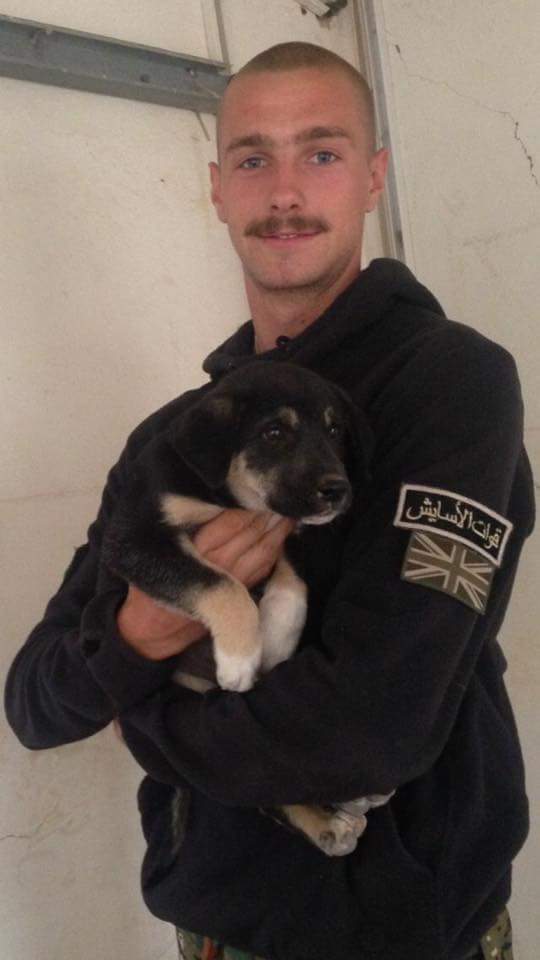
Heated battles have mostly withered away the territorial grip of Islamic State governance in Syria, and a continuous cycle of refugees flees the front line for the protection of the YPG and Syrian Democratic Forces.
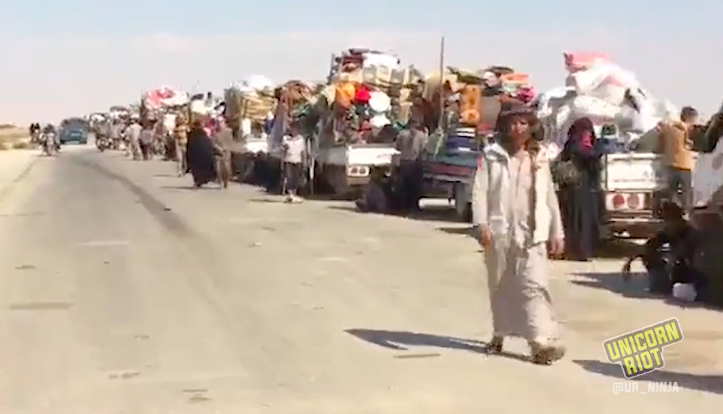
While many flee, other locals never leave, going about their family business sometimes only 300 meters from the frontline.
Although it will take time before the cities are truly safe enough for all rebuilding efforts, those cities, towns, and villages abandoned by ISIL, are repopulating with local community members eager to pick up and put back together the pieces of their lives after surviving more than half a decade of deadly conflict.
A Unicorn Riot contributor captured a recent drone strike in Deir-ez-Zor – watch the video below:
Also captured was footage of a Coalition Bell Boeing V-22 Osprey VTOL aircraft taking off in Shadaddi. Deployment of this craft in this city has not previously been reported, although in September, an American Osprey was reportedly destroyed in a ‘hard landing’ in Syria.
The city of Kobane and the outlying rural areas have had the opportunity to begin moving forward from a dark period in history.
More recently liberated majority-Arab urban areas, such as the city of Manbij, have fully repopulated with expanding economic activity. The task of defending these areas has been handed over to local forces allied with the Kurds who are a part of the democratic federation.
An interviewed of a fighter with the SDF and YPG, a former resident of Shaddadi, spotlit some of the how people’s life has been affected since the war started. He said that before the war his life was good; he was living, working, and going to school in Damascus.
When the Islamic State came, he said,
“First they come very nice. They then turn to beast. They kill us without no reasons. They have a small reason, they kill everyone. They kill my cousin and my uncle.” – former resident of Shaddadi who now fights with YPG and SDF
He said that now that he is fighting “the terrorists“, he is “happy“. He said that he does not foresee peace coming anytime soon, but he hopes his country “gets better” and that they “get rid of the terrorists“. Listen to the full interview below.
The hope is that peace can soon take hold, as there are extremely difficult tasks ahead in rebuilding the essential infrastructure left devastated by the conflict.
New military and civil organizations have formed to handle security and civilian needs. In Raqqa and Tabqa, military councils have been set up to develop autonomous and indigenous strength. Between 7,000 – 8,000 councils currently exist for neighborhoods and workplaces, as well as for civil society work across the federation, and a delegates’ assembly was attended by over 15,000 co-representatives of the councils.
Elections shall be held for representatives from the delegates’ assembly; these individual representatives will be participating in the direct administration of the region. Presently, local councils make demands of the administration and the party endeavors to meet those demands.
Supporters of the democratic confederalist project believe there is real potential for the multi-ethnic society of Northern Syria to become a model for a pluralistic future in the Middle East. The staying power of the federation may depend on its ability to provide essential services for its population.
We will continue to report from the Democratic Federation of Northern Syria with developments on this war-torn yet hopeful region of the Middle East.
Unicorn Riot original reporting on Syria:
- International Volunteers of the Rojava Revolution - DOCUMENTARY FILM - (2019)
- Looking Beyond the Rubble: Aiding the Kurds After the Syria, Türkiye Earthquake (April 25, 2023)
- Revolution in Every Country Comic Series: Episode 1 – Syria: Erasing an Inconvenient Revolution (June 5, 2022)
- Origins of the PKK and the ‘Rojava’ Revolution: Part II (September 18, 2021)
- Origins of the PKK and the ‘Rojava’ Revolution: PT. I (August 3, 2021)
- Building Autonomy Through Ecology in Rojava (February 28, 2018)
- Kurdish Fighters Defend Afrin From Turkish Military Invasion in Northern Syria (January 25, 2018)
- Kobane Rebuilds as ISIL Control Diminishes in Syria (December 27, 2017)
- As Course of War Turns, Turkey Challenges Democratic Federation of Northern Syria (Rojava) (October 30, 2017)
- Solecast #20 Rojava Special w/ Janet Biehl (January 9, 2016)
- Pipeline Politics in the Syrian Civil War (September 20, 2015)
- Youth Press Conference Bombed in Turkey - Deprogram Ep. 12 (July 23, 2015)
Please consider a tax-deductible donation to help sustain our horizontally-organized, non-profit media organization:

